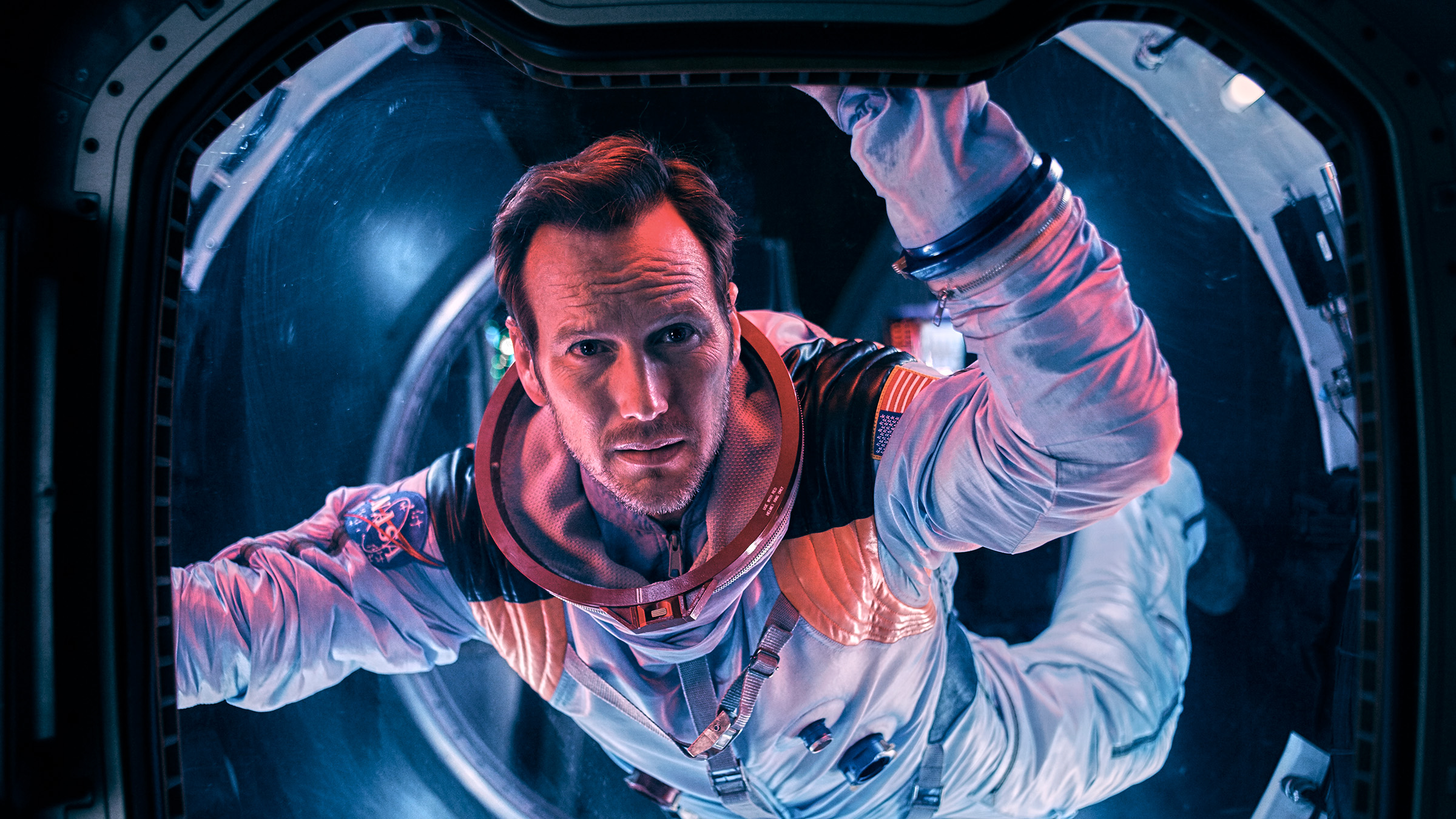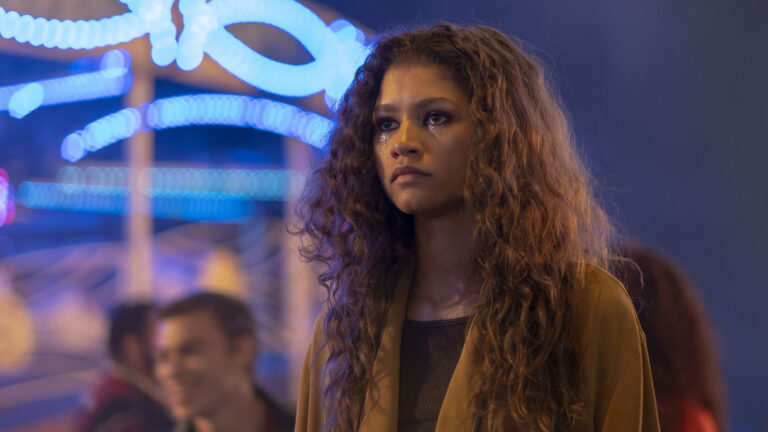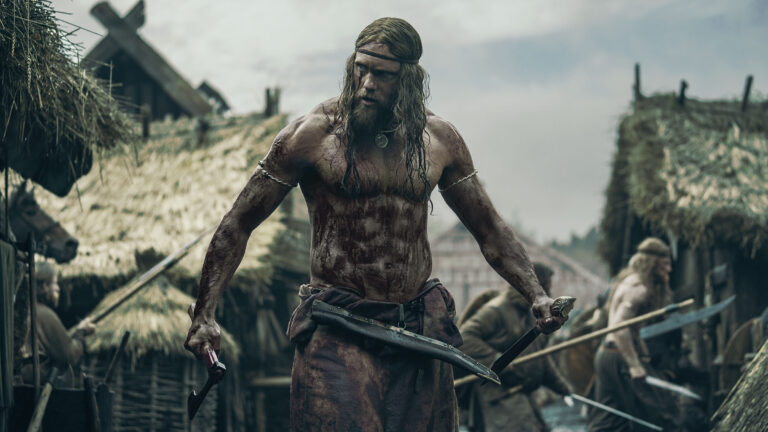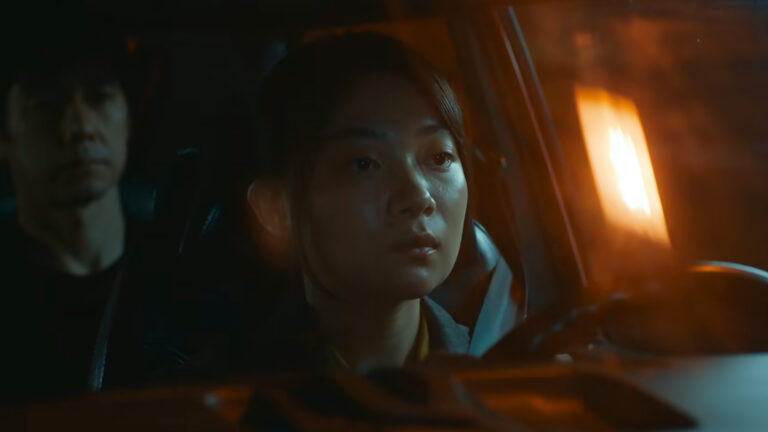In today’s Art of the Cut, we’re speaking with Ryan Stevens Harris, who edited the film Moonfall alongside co-editor Adam Wolfe. As you’d expect from a Roland Emmerich feature, Moonfall is a big, action-adventure film filled with VFX and interesting editorial challenges to unpack.
Ryan discusses his rise up through the post team to the edit chair, the way all cinematic arts inform each other, the role of sound in world-building, and how he directed a feature film with something his relatives dug up from a basement in Omaha, Nebraska.
In my Zoom call with Ryan, he sat in front of two paintings on a wall. That’s where our discussion began.
Listen while you read…
HULLFISH: Seeing the paintings behind you and also seeing that you’ve done a lot of other jobs in the filmmaking business—you’ve been a director, you’ve been a cinematographer, you’ve been a colorist, you did some sound work—tell me about either your path to editing or what those things do for you as an editor to have all those skills.
HARRIS: That’s very perceptive of you. That’s totally correct. I started in the indie world, so you’re often wearing a lot of different hats.
I came out of USC film school. I came out thinking I was going to direct my own films. I actually studied cinematography, but cutting material always came naturally. I’ve always been very fast and fluid with that—it requires a sense of rhythm.
I’m one of those people that feel like all the arts are planets orbiting the same sun. And if you have an idea in your mind, any of the arts are just a tool to accomplish that. I started out drawing comic books and that’s how I got into filmmaking to begin with. It was kind of a natural progression from there.
HULLFISH: So you painted those paintings that are on the wall behind you? I like them.
HARRIS: I did paint those. Thank you. I am a visual person. So all aspects of filmmaking really appeal to me, but I find that editing is where everything kind of comes together.
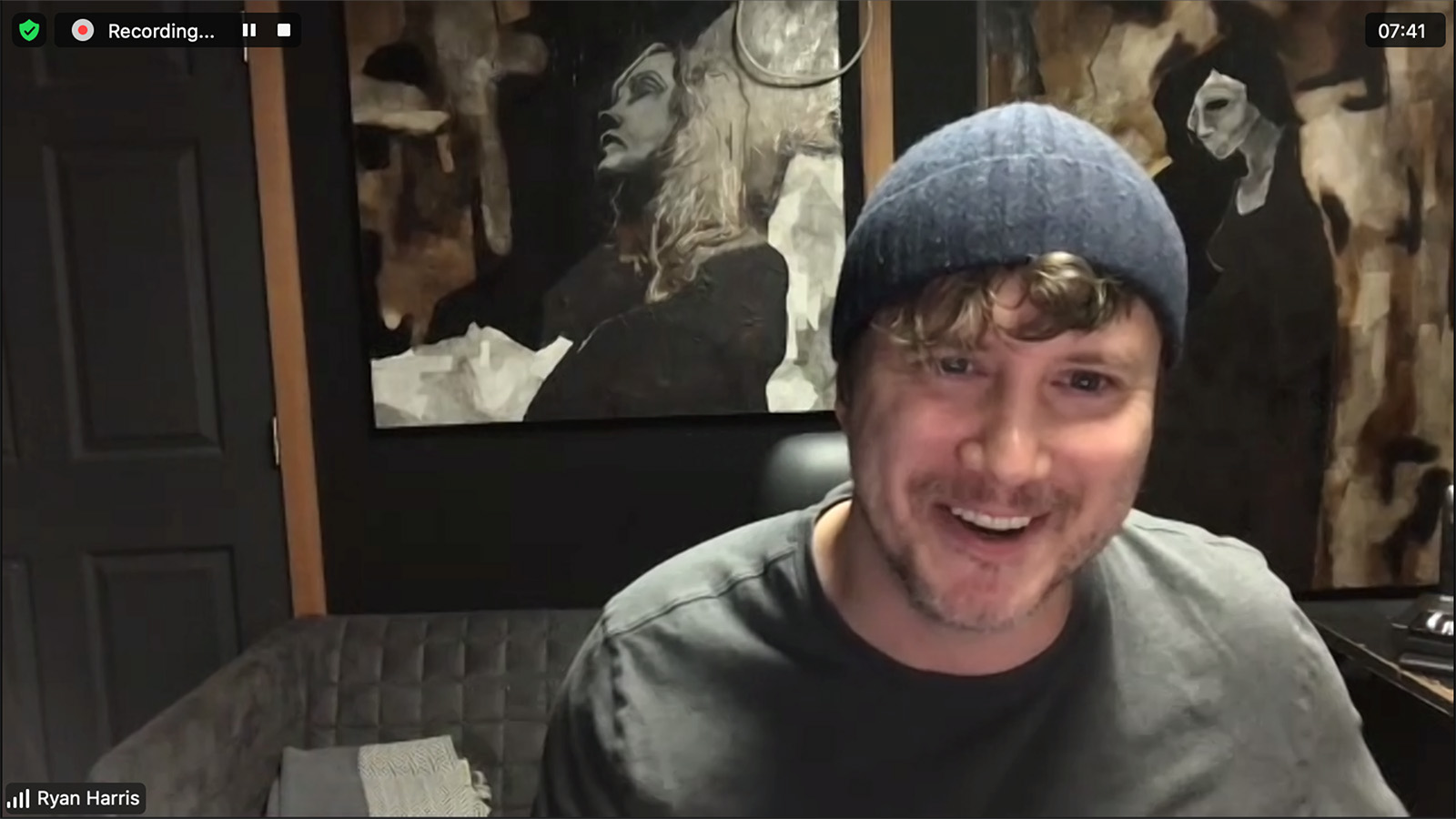
HULLFISH: You’ve been on some of Roland’s other films. How did you move up through the ranks? What do you think it was that either he or your co-editor saw in you that they felt you were ready for the chair?
HARRIS: I worked with the producer, Harald Kloser on a film called Discarnate. He was having some trouble with it. The director was back in Italy, and nobody was carrying the movie through. He’d had two or three editors on it before.
A partner of mine—a collaborator, John Michael Elfers—was brought in to workshop the movie and I came in and started putting sound to everything and polishing it. I would color it, add sound, do visual effects, so that when the filmmaker watches something they don’t feel like it’s a train wreck.
We started to get the thing to sing. It was just John and me and we ended up shooting additional scenes for it. The movie did very well on the horror indie circuit.
He was working on Independence Day at the time, so he brought me in to do the same thing on Midway. It was a lot of planes and guns. I had never done anything like it, but it was, it was so cool. I did a lot of sound work on that. It came together really, really well.
I was asked to put together some alt edits and when I would deliver something, it would really just play as I would give it over. So, I was able to do that on Midway as an additional editor.
So for the next film, Harold and (director) Roland (Emmerich) brought me in very early to start working on the previs. This was for Moonfall—heavy visual effects. Then they just had me carry over and start working on the film.
It was kind of a natural progression.
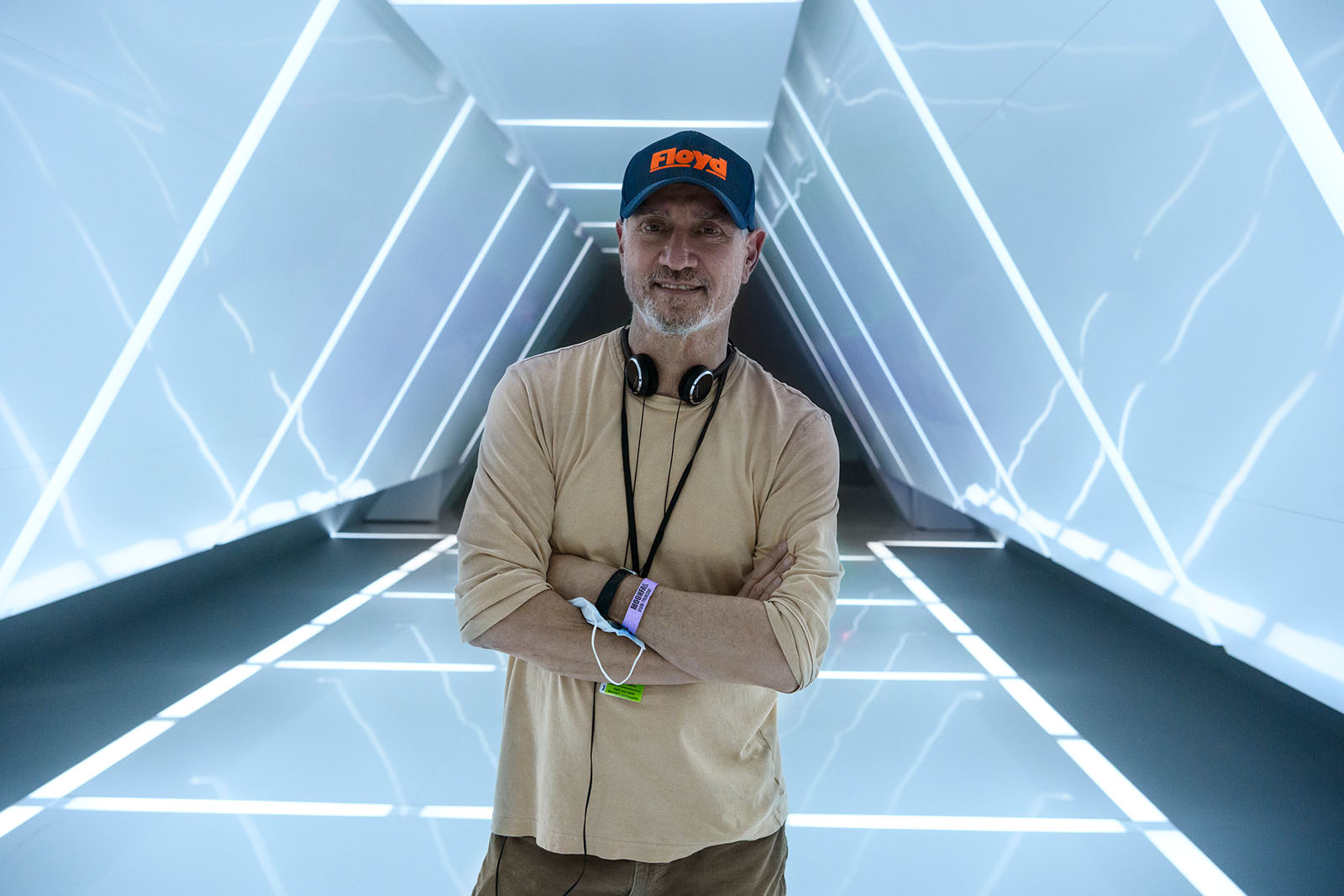
HULLFISH: I’ve talked to some people at The Third Floor. I don’t know if they did the previs for you guys, but they’re pretty well known for that. Oftentimes they have an editor from previs do the editing, but many, many editors have said, “I really want to get my hands on that previs and I want to make it good.”
Talk to me about previs and the kind of stuff that you were getting and maybe suggesting. At what point can you say, “I really think we need a close up here,” or “I need this wide shot from this angle.”
HARRIS: Roland doesn’t work with storyboards, which is really interesting because I come from a background where drawing storyboards is always how it starts. His main thing is this previs. And so it would come in and Roland and Pete Travers—the visual effects supervisor—would work on it, extensively designing the shots.
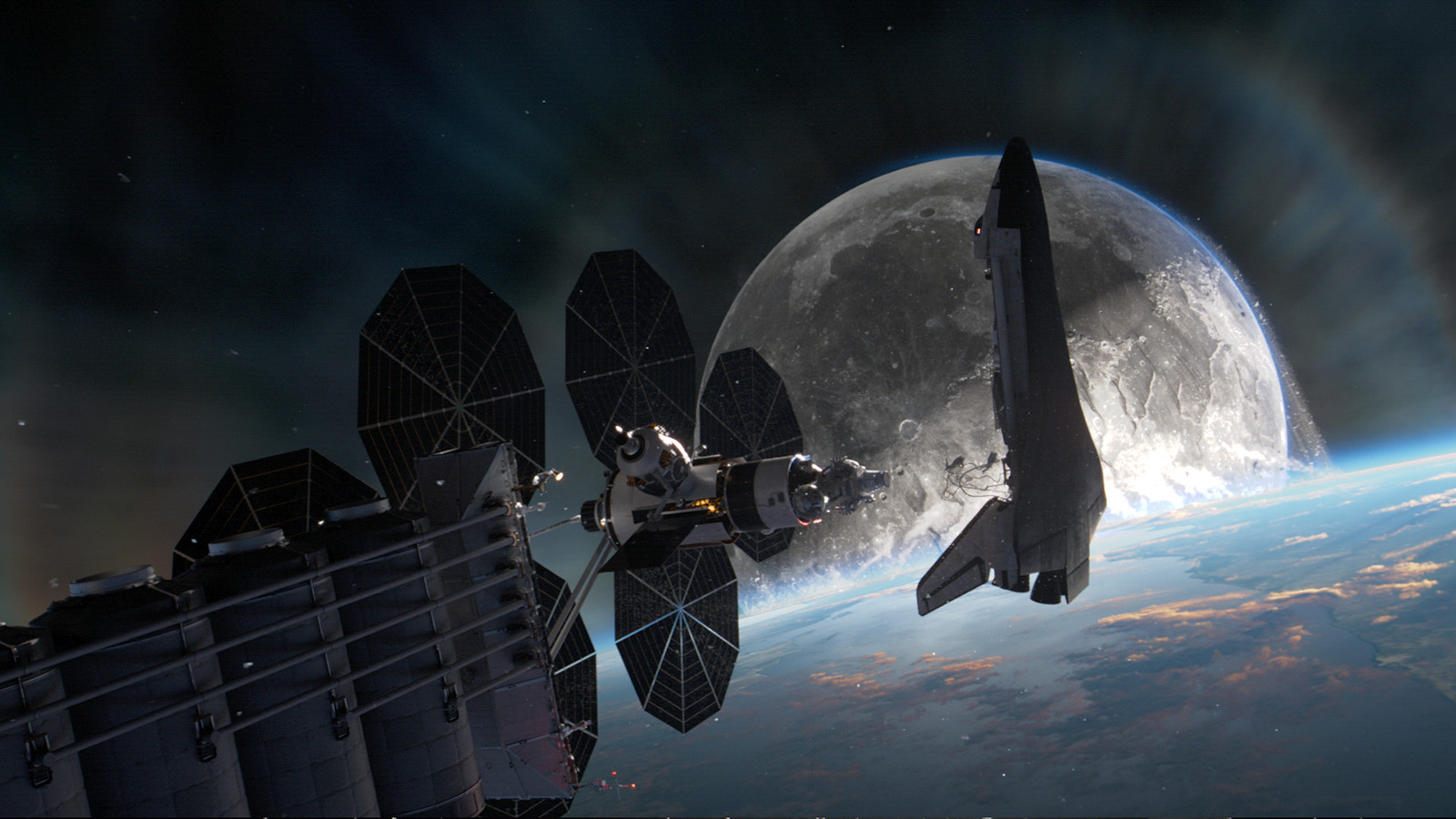
I would basically get these animatics. I would steal stuff. I’d slow stuff down. I’d cut out backgrounds. I’d replace things. So I would always try things outside the box. I would usually do a preliminary cut that would be like what Roland envisions. And then I would do something that might dramatize the moment a little more, maybe stylizing it in some way.
Then I basically put all these sounds in and I would even record voices. So my wife, my daughter and I would do temp voices and he would get these things back and everybody would just be throwing exclamation points back at me, saying, “This is like a whole movie.” A lot of the sequences that are really visual effects heavy, he had a chance to see pretty early how he wanted them to go.
HULLFISH: Did Roland ever consider just replacing Halle Berry with your wife?
HARRIS: That’s hilarious. No, but my voice was comped in until the very last moment.
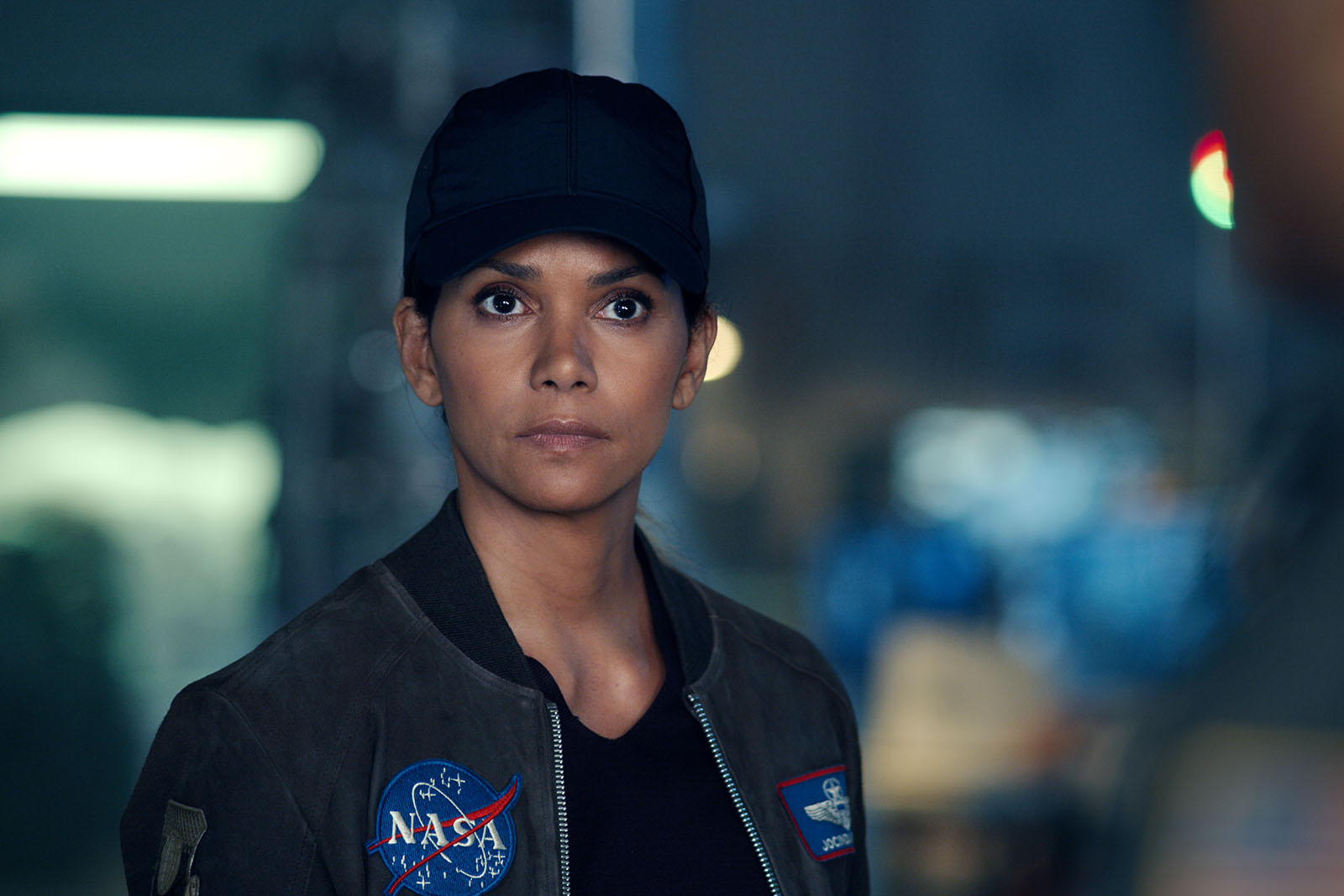
HULLFISH: With this movie you’ve got a bunch of threads going on—you’ve got different families, you’ve got different organizations, you’ve got what’s going on up in space, you’ve got what’s going on down on Earth. Were those things all intercut as scripted? Or did you find that you needed to change the way that the intercutting was happening between storylines?
HARRIS: Because of COVID, Roland was in Montreal and so we were getting all of the dailies back in LA. We were putting whole sequences together with very few intercuts, at first. So we let certain things play.
Then we did a more radical version for Roland where everything was intercut, more along the lines of the same story. We changed where the thing ends, so it ends in a more climactic moment and shuffled all this stuff around.
Through the process of us working, we landed back on that very first version.
As soon as Roland saw it, he wanted everything back the way it was in the script. What’s funny is: through the process of us working, we landed back on that very first version that we showed Roland ages ago. So it was a process.
Roland’s big thing is cause and effect. Always be cutting to something. So whatever happens in the previous scene causes the next scene to happen. It’s his mantra.
Probably his most important thing in the editing room is cause and effect because he always seems to have these really large casts and a million threads going on, so it can’t just seem like stuff is coming out of nowhere for no reason. It always has to have this kind of logical progression.

The intercutting at the very end of the movie was probably the trickiest part because we don’t want to leave one story at the wrong time. It still needs to be cause and effect: the moon coming in and causing this, that, and the other thing.
One of our earliest instincts was to have the movie end at this certain point—end with Halle’s story and through all these test screenings, we actually found that we were just shaving down this stuff on Earth more and more and more. We didn’t want to lose that stuff, but we had to make it brisk.
HULLFISH: Can you talk to me a little bit about maybe some of the things that you learned from exploring those avenues even though you went back to an original way?
HARRIS: We ended up smuggling a lot of this stuff back in from that original. The early cuts were obviously too fat. There was much more air in it. Sometimes the thing gets whittled down so much that you go back to the moment when it was breathing and you don’t know necessarily why it’s singing or why it was magic.
Sometimes the thing gets whittled down so much that you go back to the moment when it was breathing and you don’t know necessarily why it’s singing or why it was magic.
We did it multiple times with the sequence inside the moon. We did an initial sound mix from the Avid. We were always cutting in 5.1 so it was very full. It had a lot of space for all of these big sounds to play and reverberate as the thing went and went and went to got busier and busier and busier. So we would actually constantly be bringing back in that old mix and those old cuts of that interior moon.

In act three, where we went back to an older structure ending with Halle’s story, many things were just longer. On Earth trying to get to the tunnel, breathing through the oxygen masks…that got whittled down to next to nothing. There are still some things I’ll always still miss, but Roland really likes to keep it brisk and really likes to move.
He likes things elegant with not a ton of edits, but to really move. He doesn’t want it to be tons of edits all over the place, which he finds to be pretty inelegant. He’s always using that word: “Can we make this more elegant?” And it’s usually eliminating cuts, keeping it brisk, economical, and just getting from point A to point B in a nice smooth way.
So usually it was a process of eliminating some of the material just to make it smooth and elegant going from scene to scene.
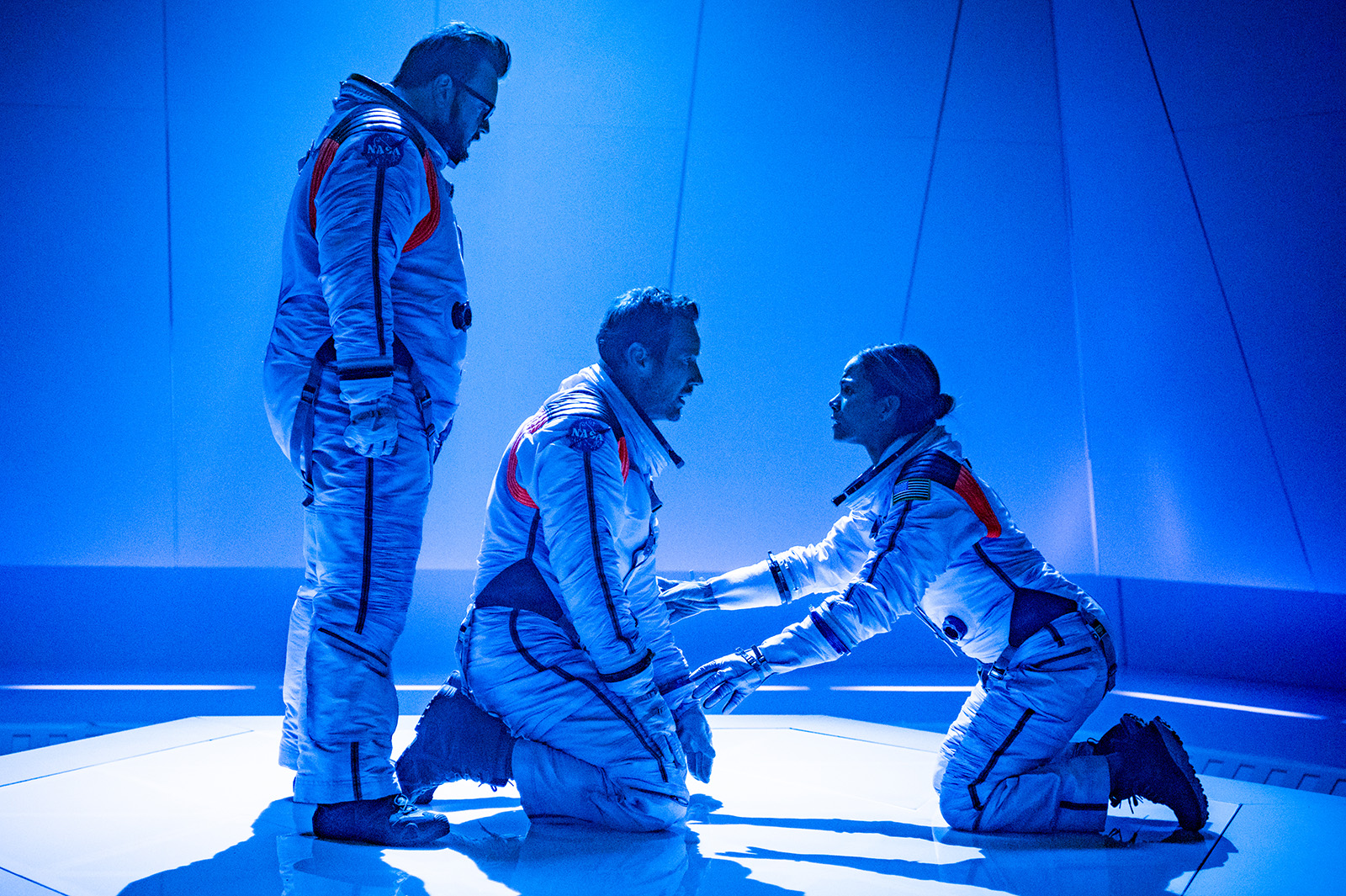
I never felt like any of the work was lost because there were a lot of different moments in the movie where the process really, really mattered. The white room in particular comes to mind as just being such a journey of getting there. Adam was always joking, “We’ll be working on the white room the day before release.”
HULLFISH: Let’s talk about that relationship with your director and notes. When I hear something like, “Can we make this more elegant?” I think, “That means that what I cut was not elegant. Okay. Let me think about this for a minute.”
Talk to me about your thought process. When you hear that, how open to new ideas do you have to be when you hear notes?
HARRIS: Roland—bless his heart—is a German guy. So I always try to keep that in mind. I would show him something and he’d be like, “Ryan, this will never work.” If you show him something that’s not ready or polished, or it’s not already singing, sometimes we’ll just eighty-six it and then you never get to go back to it.
I don’t take any of it personally at all. I think it’s just because when I’m there, I always just feel like I’m trying to make the best version of the movie that that director wants to make.
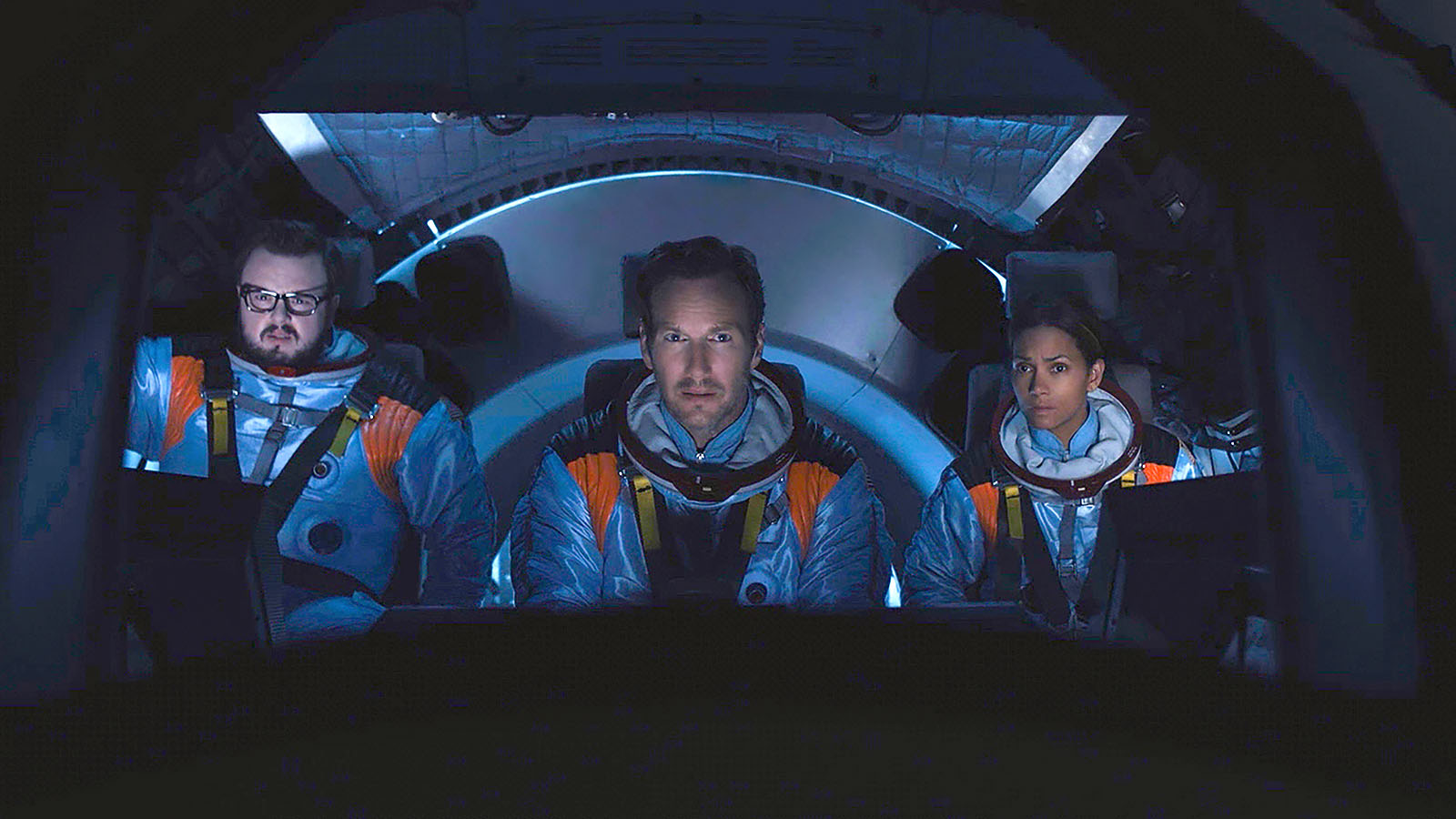
When you’re the director, you’re really dying on the cross. The director is on the hook for every decision, so I’m just trying to make his movie as best as I can. If he wants to try something, I don’t fight at all. I’m going to try it.
Obviously we have 80 million versions that are already there. We already have those, so if he wants to try something, then we try it. Or if he really doesn’t like something, we don’t use it.
So I really try to not be a hindrance. If there’s something that I love, usually it’s pretty easy to go to bat for it. There’ve been more than a few instances where that’s happened.
HULLFISH: You mentioned the process and especially the process of that white room. As you see things in context, and as the movie evolves and finds itself—the best version of itself six months ago is way different than the best version of itself now. Can you talk about that process?
HARRIS: We can talk about the white room for a long time. That’s probably the biggest sequence that was evolving constantly. At one point there was a character that was an ancestral character that they meet when the boy manifests. We removed him.
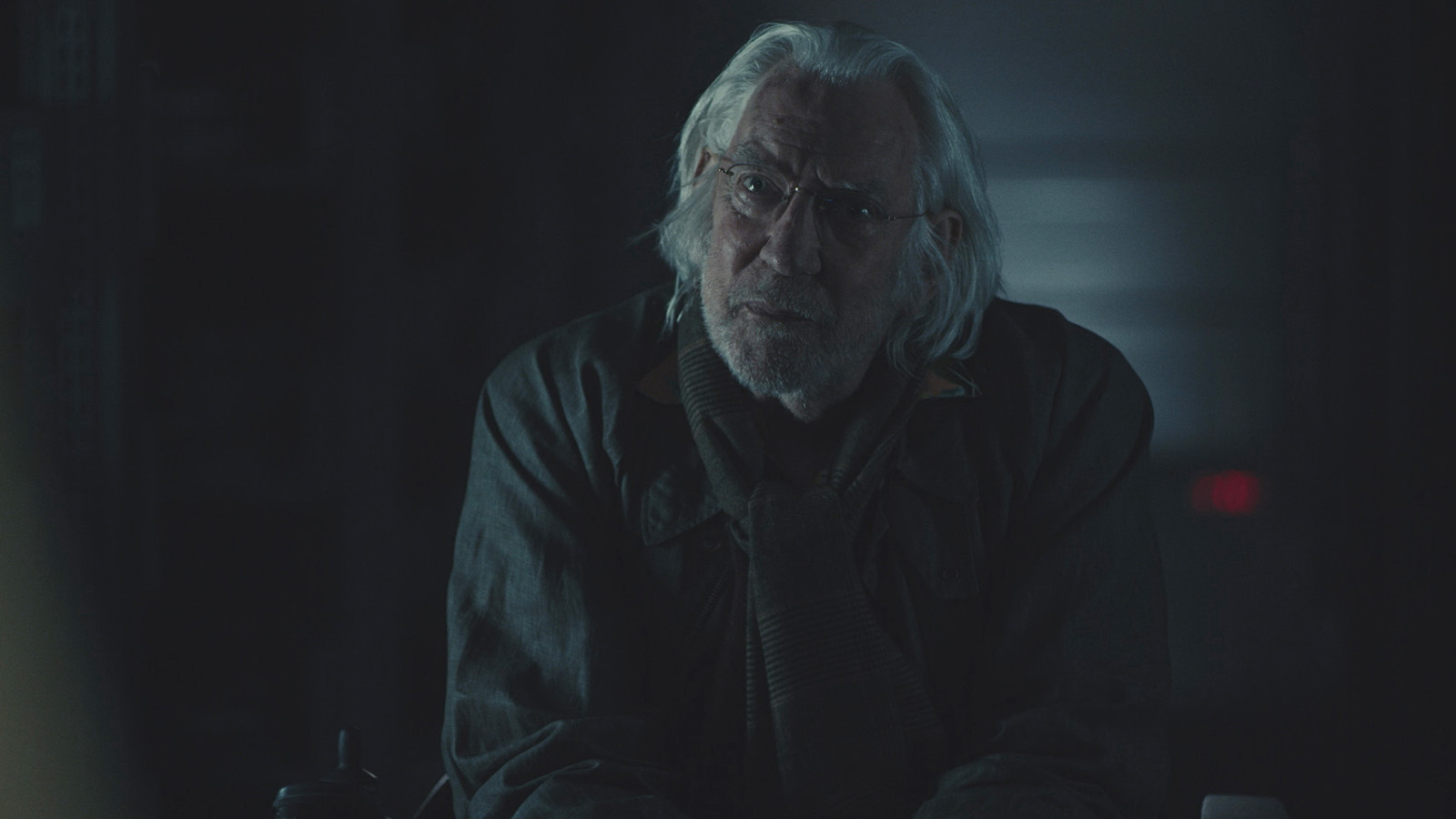
It felt like the character was coming out of nowhere. Then I spent the next week and a half literally fudging the lines of the ancestral character into the boy’s mouth—that exposition, that backstory. That was a sequence that was shot. It was put together, they had an actor cast. Then here we are trying to rework it in such a way where a new actor says the lines. So I’m trying to make the best version of that as I can.
I was always trying to make the sound as big as possible—gravity of the moon type stuff—where we had these really big sound moments full of bass and LFE [low-frequence effects]. A lot of our early temp mixes that we would play for audiences had this huge amount of power.
I loved the idea that Moonfall was this movie that would play like in a theater next to you and you’d think, “What in God’s name is that shaking the theater?”
We had [re-recording mixer] Greg Russell as one of the mixers on this and I just love him. He and [re-recording mixer] Tom Marks, who is terrific also. But Greg always would bring so much “chest” to everything, which I just appreciate a ton. I never have to ask. “Could we turn it up?”
HULLFISH: I’m really interested in the idea of shorts you’ve cut. What does short-form get you? Does it flex new muscles?
HARRIS: I think it depends on what short it is. I did Watchtower, which was for a close friend of mine. Usually that’s what it is—a close friend of mine who I’ve worked with before it comes to me and will ask. Coming from USC—this film school network—everybody’s going up at the same time.
I like short-form, actually. You mentioned directing work. I have a film that I shot on 35mm that I’ve been making for the last three, four years. I’ve been shooting it and cutting it on the side. So I ache for a short-form project that I can just get out the door in a high quality way.
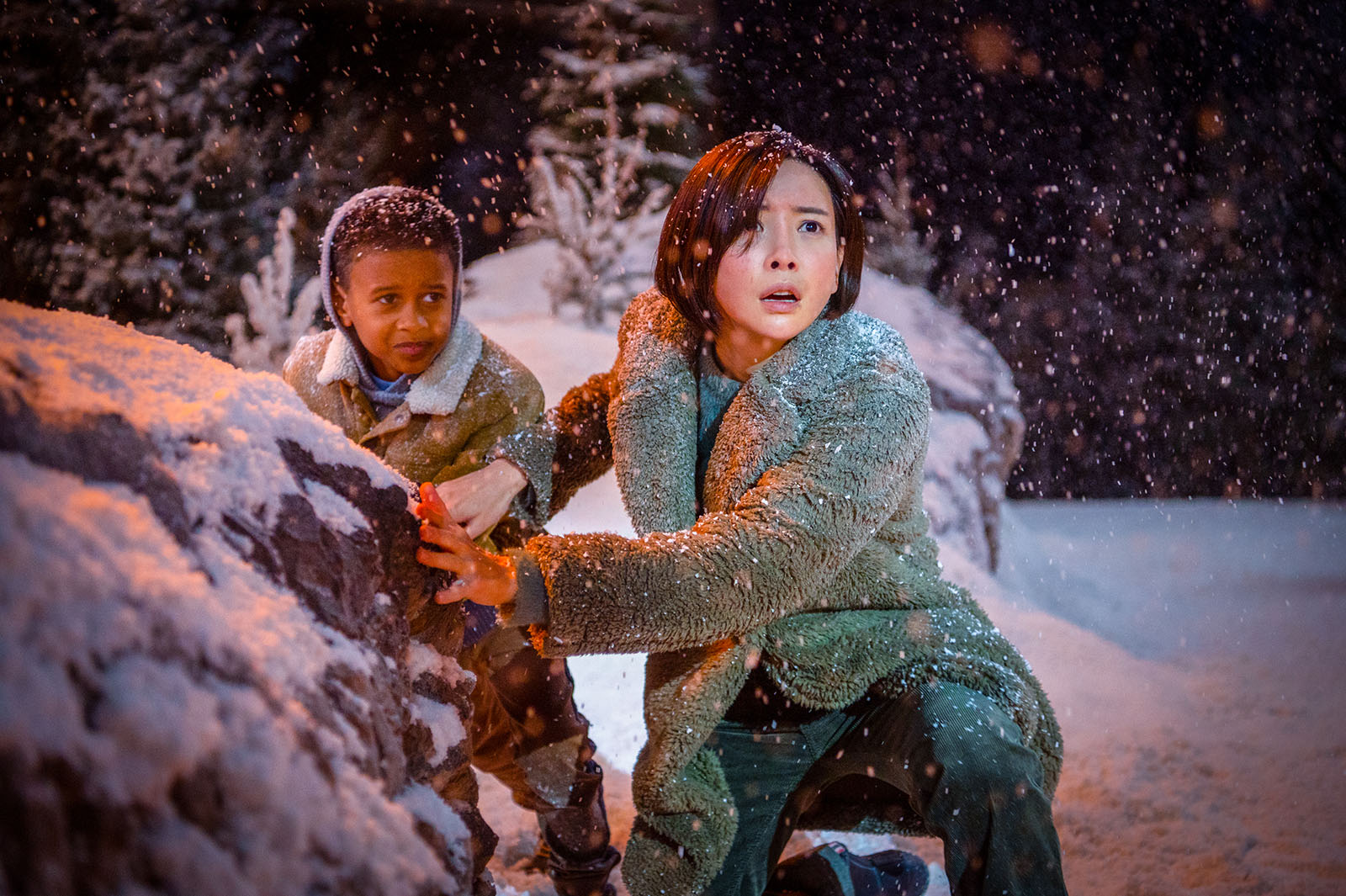
Watchtower went to Cannes and played at the short corner there and right now I’m working on a docu-series, which is about rural poverty in Mississippi. So I tend to drift back and forth between anything I can get my hooks into as an editor.
HULLFISH: Do you find that you’re flexing different muscles when you’re cutting doc stuff, than when you’re cutting narrative or do they play into each other? What do you learn? Is there something from cutting docs that you take into narrative or vice versa?
With narrative film, you have these things you have to hit, but with a doc you can throw in everything.
HARRIS: It’s more of like a 3D- or 4D-type of editing with docs because I can bring anything in narratively. With narrative film, you have these things you have to hit, but with a doc you can throw in everything.
The current doc is about rural poverty, so we slow the pace down a little bit, but when we pick it up, it’s like we can bring anything in. You comb through everything, hunting for verité moments—little things with the characters.
Often, the editor is writing the story. We have like a little Trello board and it really allows you to experiment and find the elasticity between stuff that you might not uncover normally, especially in a narrative. So I actually really enjoy it. But it is a little more slow moving because you’re writing the story as you’re going.
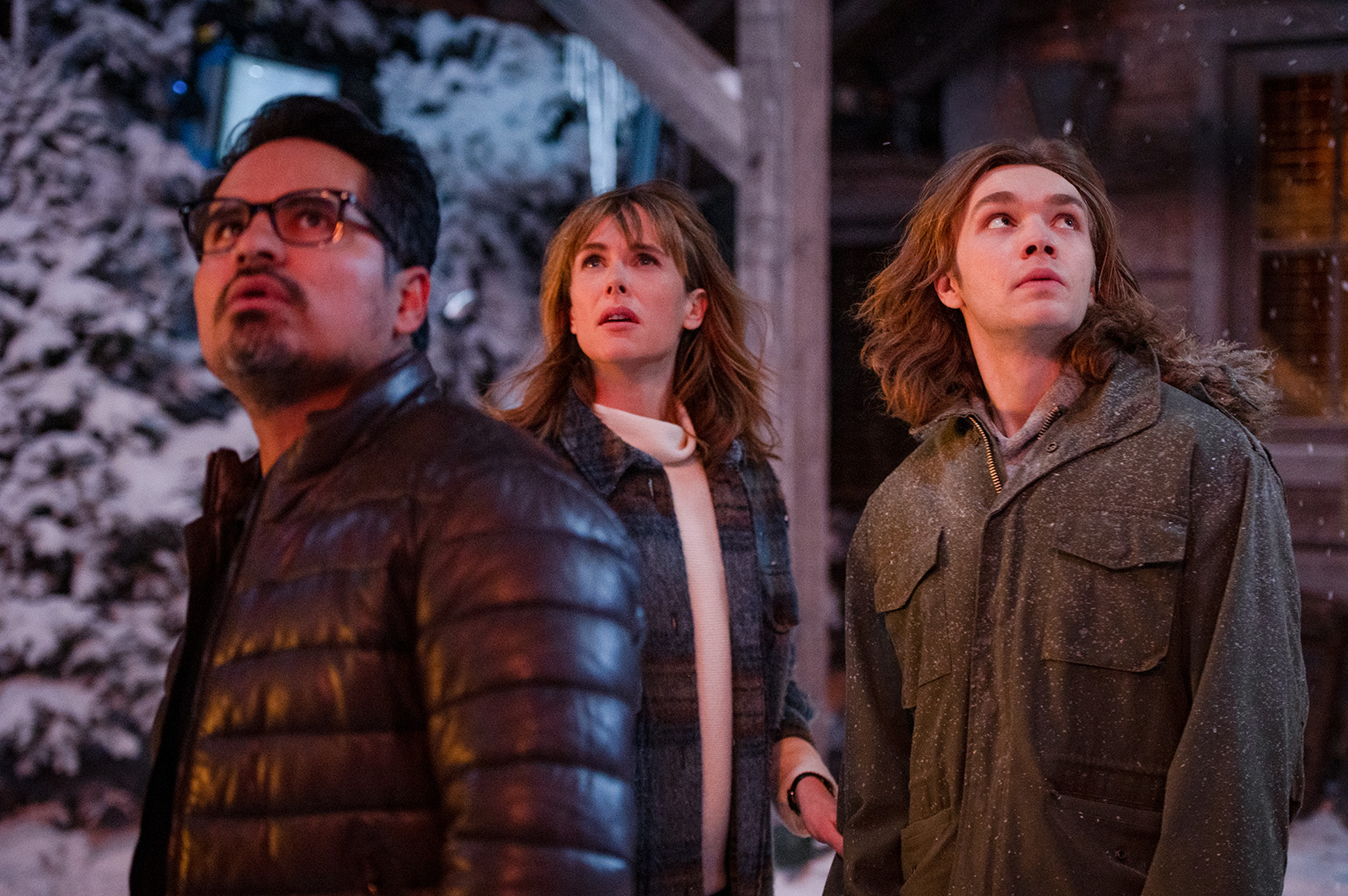
HULLFISH: Walter Murch says that every editor should get a writing credit on a doc.
HARRIS: That’s a great way to put it. The coolest stuff in a doc is seeing people interacting in a real and honest way and that’s the stuff that I feel like I’m hunting to find.
HULLFISH: Let’s talk about building up characters so that the audience cares for the characters when those big action scenes happen. One thing I felt was a bit of story that started to be developed was about the lead astronaut and his son and their passion for cars. Was that more fully fleshed out in the script or in earlier incarnations of the edit?

HARRIS: There’s a lot on the cutting room floor. I’m not going to say too much about that. But yeah, there were a few scenes with Brian and his son at the beginning of the film—one in particular that I felt like we needed, but it is what it is.
The most sympathetic character in the film—the one that you’re rooting for the most—is probably KC’s character, played by John Bradley. He’s just a lovable everyman and he was the person that audiences were most leaning towards, even in the screenings.
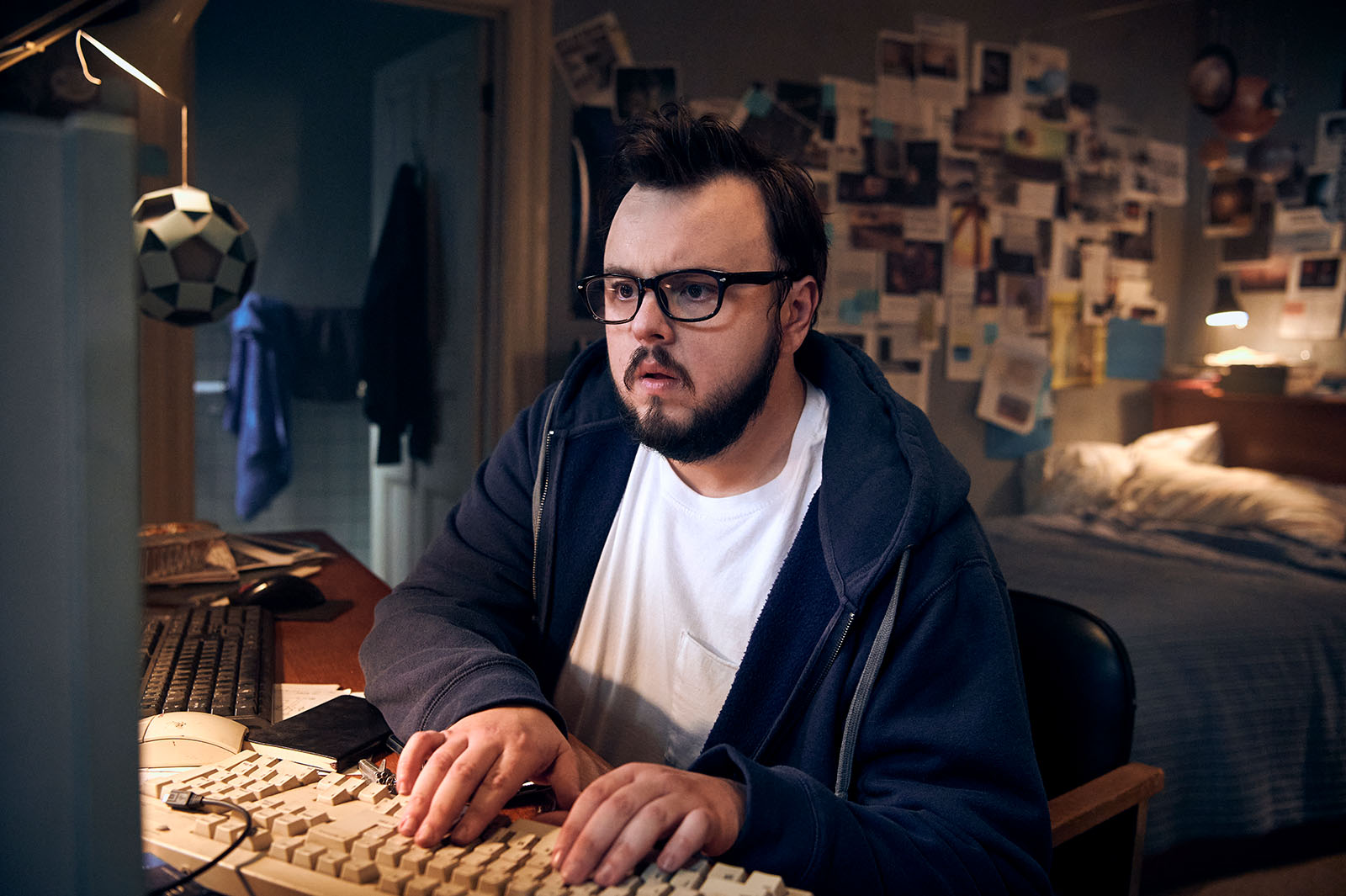
So, late in the game, we actually decided to lean into that and Roland reshot an ending with KC and that’s where the movie gets very high-concept sci-fi—which I always felt like was a very strong way to go with the movie—this Lovecraftian type of space/cosmic horror, but that’s my own indie-film side talking.
HULLFISH: I’ve heard that on other films there have been cases where a secondary character seems to be kind of stealing the movie and maybe we should just let him.
You mentioned that you worked on editing the previs. Let’s talk about the importance of revealing the geography of the scene through editing so that audiences are not confused—how do you take this 2D medium and make it 3D for the audience?
The easiest way to establish the geography I find is with sound.
HARRIS: One of the early sequences that we worked on was the launch sequence and there were a lot of things happening in that where the shuttle is taking off, then we’re cutting to Sonny in the car and then we’re cutting back to the control center where everything’s going haywire. Then guys are coming down the stairs as they’re being floated up by gravity. So there are all these things happening.
The easiest way to establish the geography I find is with sound. For instance, the shuttle’s taking off, then you hear the doors explode open. Then you hear the helicopter in front of them. Then they look over and the shuttle is rising. So using the sound to help you establish where you are.
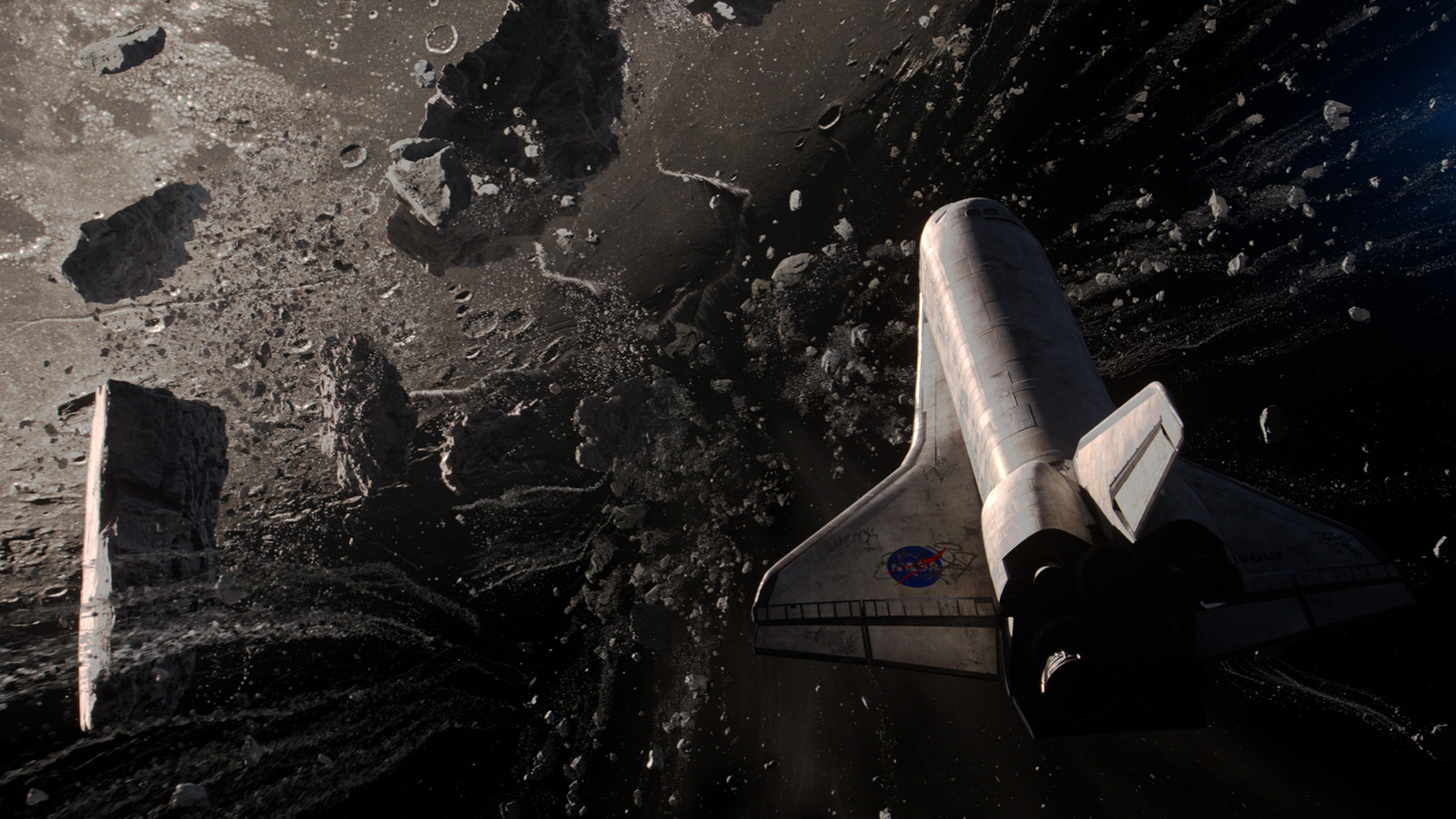
The big alarm is going off as they’re running down the stairs, then into Sonny and boom, you hear the engine and he looks in his rear view mirror, and then he hops out of the car and he’s looking at the big gravity wave coming towards him.
So sound. But also with Roland’s coverage—he has these Roland-esque shots—like the slow push-ins as the characters look at the big thing and then—boom—reverse. The scale was always so large that I do feel like it’s very easy to figure out where you are because Roland gets so far back.
It’s so big, like an extreme wide shot magnified by a hundred. And, like I said before, he doesn’t like a ton of cuts, so his coverage kind of speaks to you when he shoots it. I don’t find that the audience has a hard time following his coverage.
HULLFISH: I was thinking in particular about the sequences inside the moon and there are a lot of moving, panning shots that reveal things and stay with the shot as it moves so that you understand the geography through the movement of the camera.
HARRIS: Yeah. So we’re always slowly unfurling the layers.
HULLFISH: Talk to me about how you tell a story that’s so reliant on VFX when you don’t have VFX at the beginning.
HARRIS: I know. I hate to keep bringing it up, but the sound really helps a ton.
HULLFISH: I agree. So often with stories like this that have an unbelievable, fantastic world, that the sound sells it. I think of watching Star Wars with no sound… It’s almost laughable without the sound design and score.

HARRIS: My idea was just to start off the movie so that when we cut to the space, it’s all conceptual. It’s quiet. There is no sound in space, obviously so it’s just score and conceptual sound design. And then as we get further and further into the moon, then we start to get into our Wonderland, right?
And then it starts to just become full Star Wars as we get further and further into the moon. We have full laser blasts, full engines, full everything, and it gives us a way to kind of arc into it. You’re hearing every little mechanical thing at the beginning when it’s just two astronauts working on a satellite in space.
The sound sometimes actually helped drive the visual. We were working with rough previs, but also previs that we would then manipulate it. Like the swarm—the road map for the visual effects team came from the sound.
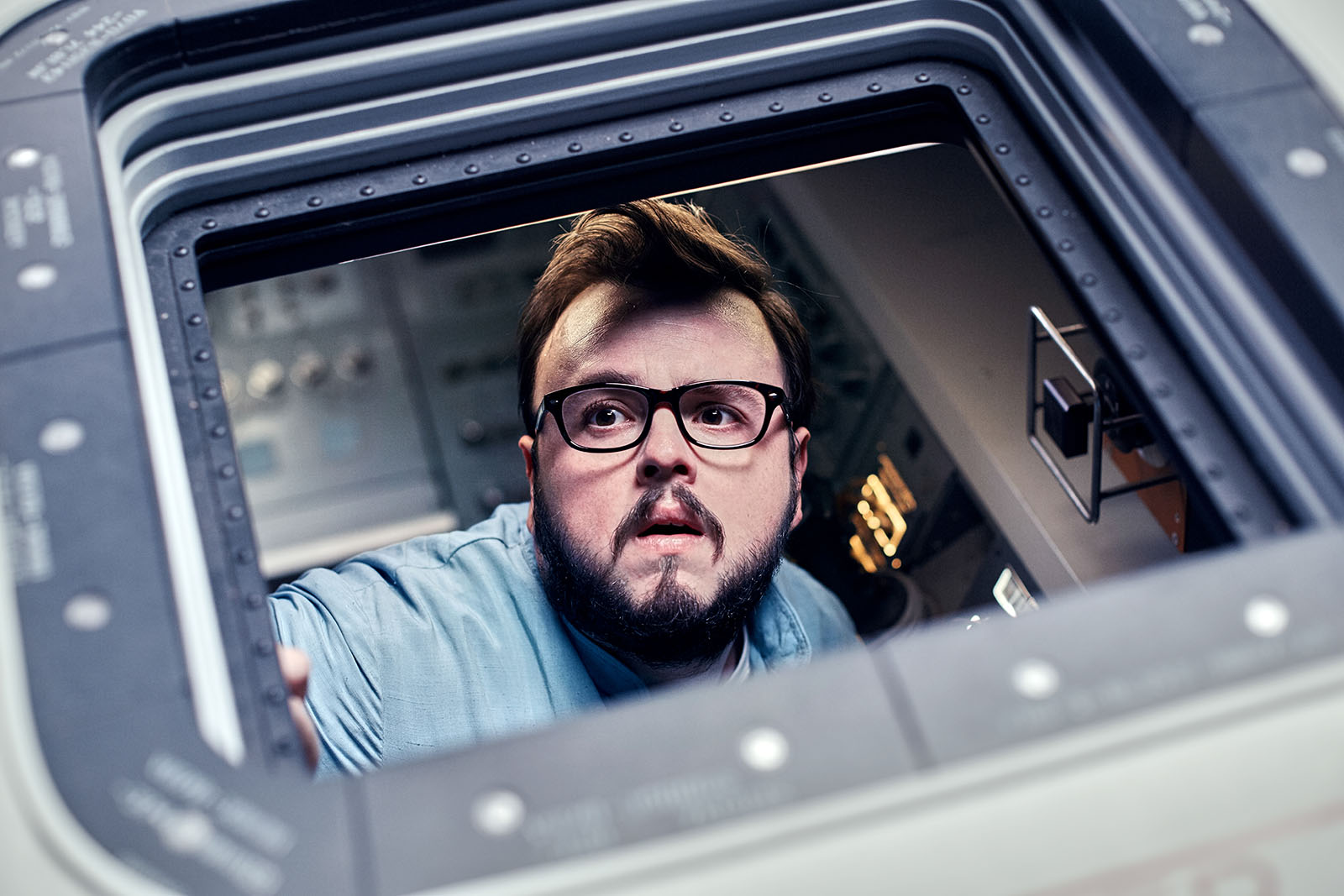
HULLFISH: A lot of people would say, “That’s the way sound’s supposed to work.” Sound guys would probably say that they’re 75 percent of the movie.
Tell me a little bit about directing, like the thing that you’re working on in post now. What are some of the things that you have learned being an editor that speak into your directing or even your cinematography?
HARRIS: The film I just did, I shot on film on expired 35mm film stock that we actually found in a basement in Omaha, Nebraska. We actually dug it up. This guy had a 100,000 feet of film in this basement.
I like to shoot on film because it’s very formalist. It makes me plan everything. I had to break down the coverage almost like I was editing the film as I was shooting. That’s how it has informed my directing. Anyway, the problem is that then I fall in love with shots and that’s often why you shouldn’t cut your own material.
I like to shoot on film because it’s very formalist. It makes me plan everything.
HULLFISH: Talk to me about that. When you’re editing your own stuff. Do you hire an editor? Or do you just have to pretend you didn’t direct it?
HARRIS: That’s how I work. I do it the same way that I do when I edit for someone else.
It’s my own material, so I’m not on my own clock. So I break everything down in the most strict way, and then I just systematically build it and start whittling it down.
John Elfers is a collaborator of mine. He cuts movies as well, so sometimes I’ll bounce stuff off of him. Sometimes I do worry that I can’t see a foot in front of my face. That’s what I worry the most—I’m so in love with this, and I’m so close to it. I can’t see outside of the forest especially when you’re on a project for a very long time.
It’s harder when you’ve directed the material because you know all of the work and all of the love that’s behind every little thing.
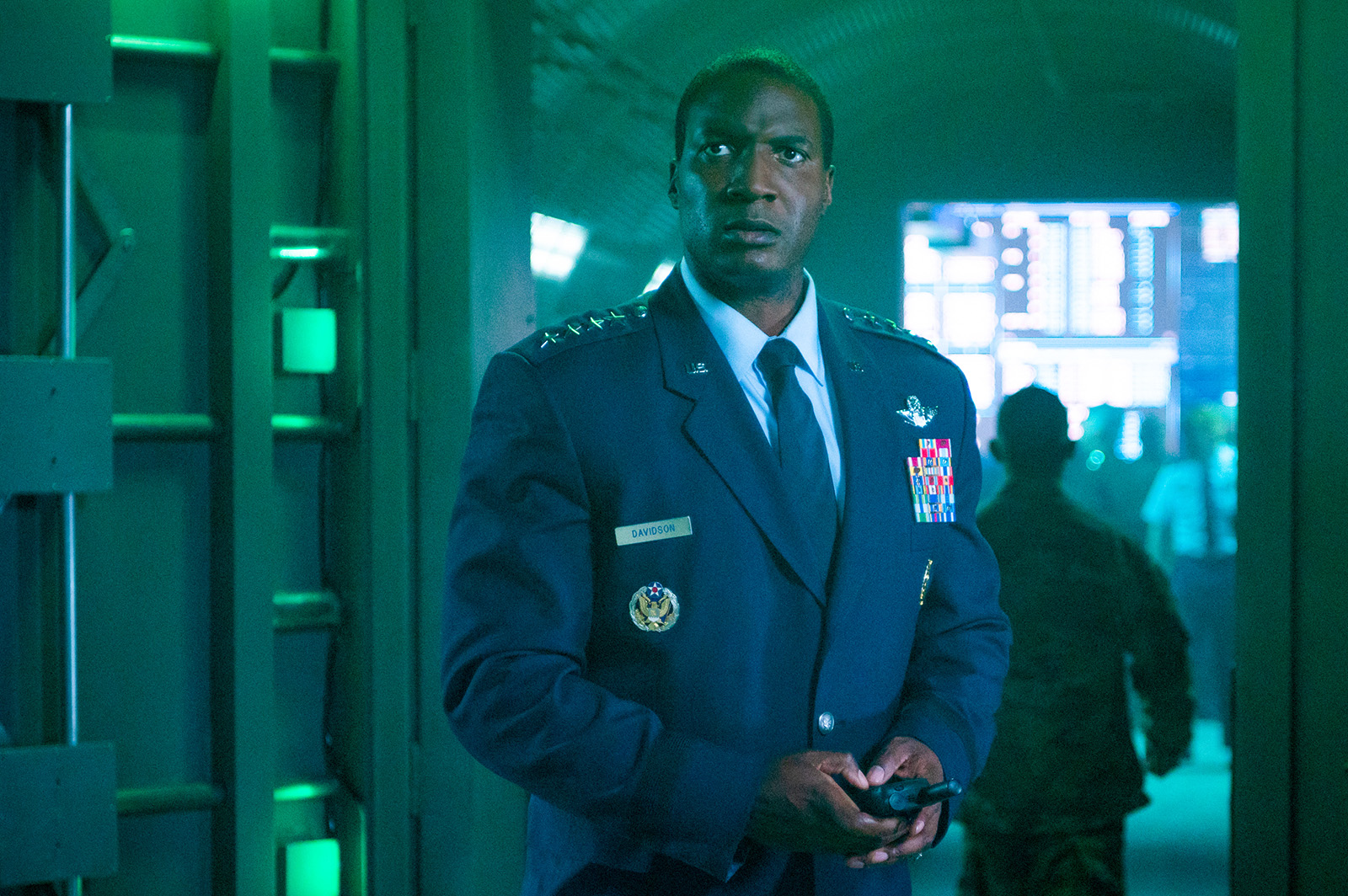
HULLFISH: I’m really interested in this project that you’re talking about. Sounds like a passion project you’ve been on for a long time. Describe that for us.
HARRIS: As I mentioned, I’ve been directing this film outside these big studio projects. When I went to USC, we were the last class to shoot film. And so I wanted to get back to this formalist way of shooting. It’s a film called Moon Garden. It’s a dark fantasy film. It’s this twisted little Alice in Wonderland tale. The whole film is about family. My daughter’s in it.
I was able to bring our family unit into a project and work on something together, which is so terrific because I find sometimes, with long hours and stuff, you don’t have that time. So it’s nice for everybody to be together. I worked on it with a partner of mine, John Elfers. We’ve been collaborators since film school. We’re hoping to do the festival circuit.
HULLFISH: What’s your hopeful ETA of getting that to market?
HARRIS: Hopefully we’ll have it out either this year or the beginning of next year.
Roland doesn’t have any issue with killing the babies. He just says, ‘Let’s get rid of it. I don’t want to see that shot again.’
HULLFISH: To get us back to Moonfall from Moon Garden, tell me about Roland and your collaboration with him. Is he the kind of guy that has a problem getting rid of stuff like you suggested you have on your personal project?
HARRIS: Roland doesn’t have any issue with killing the babies. He just says, “Let’s get rid of it. I don’t want to see that shot again.”
HULLFISH: So that’s something to learn from right there. Because I know you’ve been a sound designer on other films, can we touch on that again. I feel like it’s so important in this film.
HARRIS: I was a sound designer on the film and so it’s very close to my heart. I always felt like the sounds of the swarm were going to be critical. The previs on the swarm looked like just a heavy metal haircut for half the editing of the movie. They hadn’t manifested into anything.

Everybody always wants sounds to be organic, and that’s terrific, but I just felt like we had this really cool opportunity to turn this thing into this dark digital, dark math, vortex of geometry that would be moving. So I started to build this sound bed with all this different material making it very digital.
The production team and Roland always talked about the swarm being intelligent. So I used a lot of dark synths, vortex sounds, a lot of bass drops, things that would vibrate, would rise and fall and have a very unique character.
I always felt like we could just make this big, massive villain, something unique. I do feel like we accomplished that with sound.
HULLFISH: The swarm is a big character in the movie. A very important one and it doesn’t have any dialogue, so you’ve got to figure how else do we represent it? Especially, I would think, if all you’re looking at for how to judge emotional content is “a heavy metal haircut.” That doesn’t look intimidating. It’s not scary. There’s nothing about it that’s remotely threatening for most of the time when you’re editing the movie.
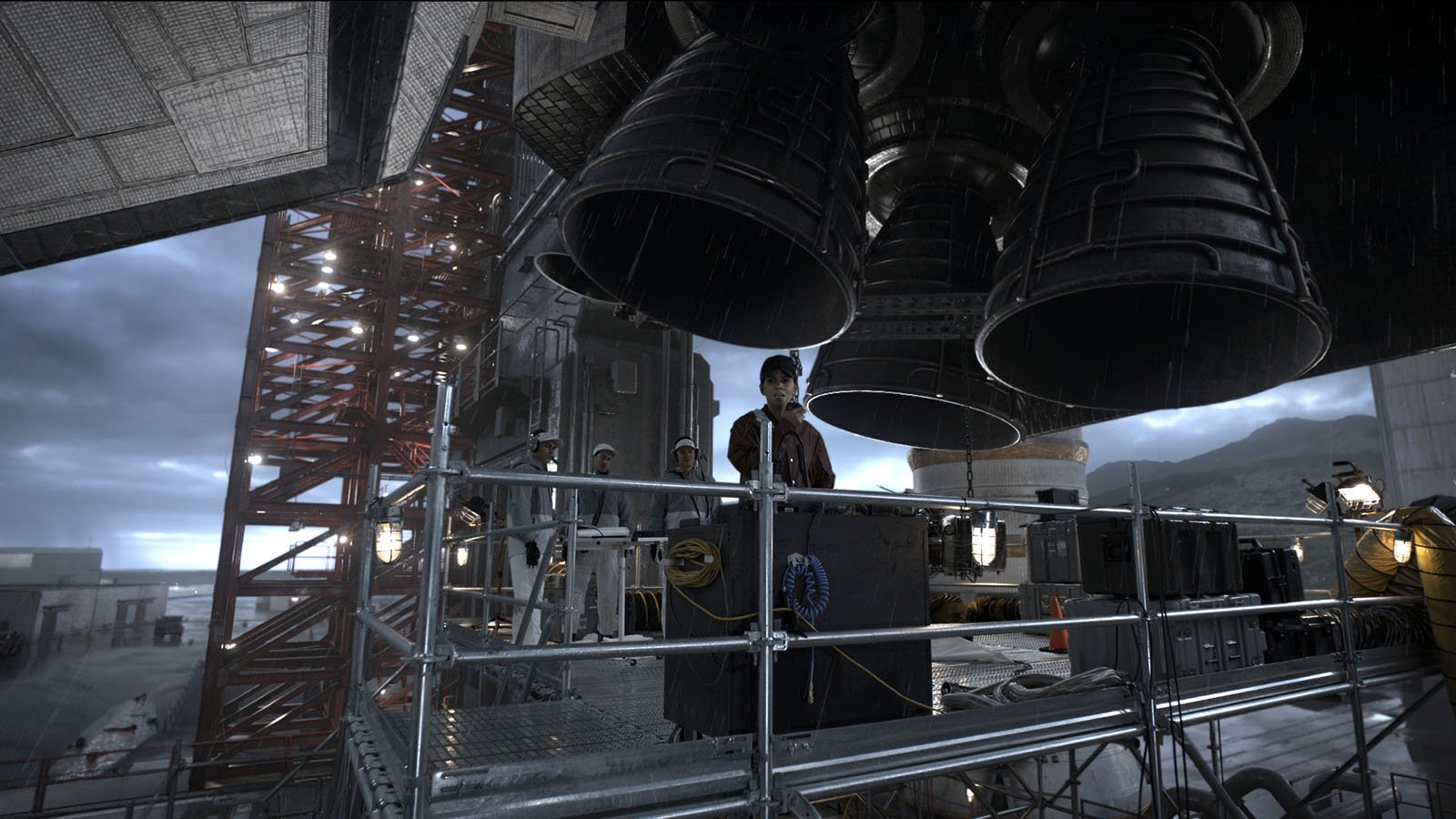
As an editor, you need some way for even just you to have some kind of emotional sense of the danger.
HARRIS: Yes. It needed to feel big and ominous.
HULLFISH: So doing sound design on horror films probably paid off for you.
HARRIS: Horror films are all sound design.
HULLFISH: Ryan, thank you so much for chatting with us today. I feel like I learned a ton from you and I really appreciate your time.
HARRIS: I should mention that years ago I read a color grading book of yours.
HULLFISH: That must have been The Art and Techniques of Digital Color Correction. Cool! Thanks for reading and thank you so much for your time. It was great talking to you.
HARRIS: Thanks again.

